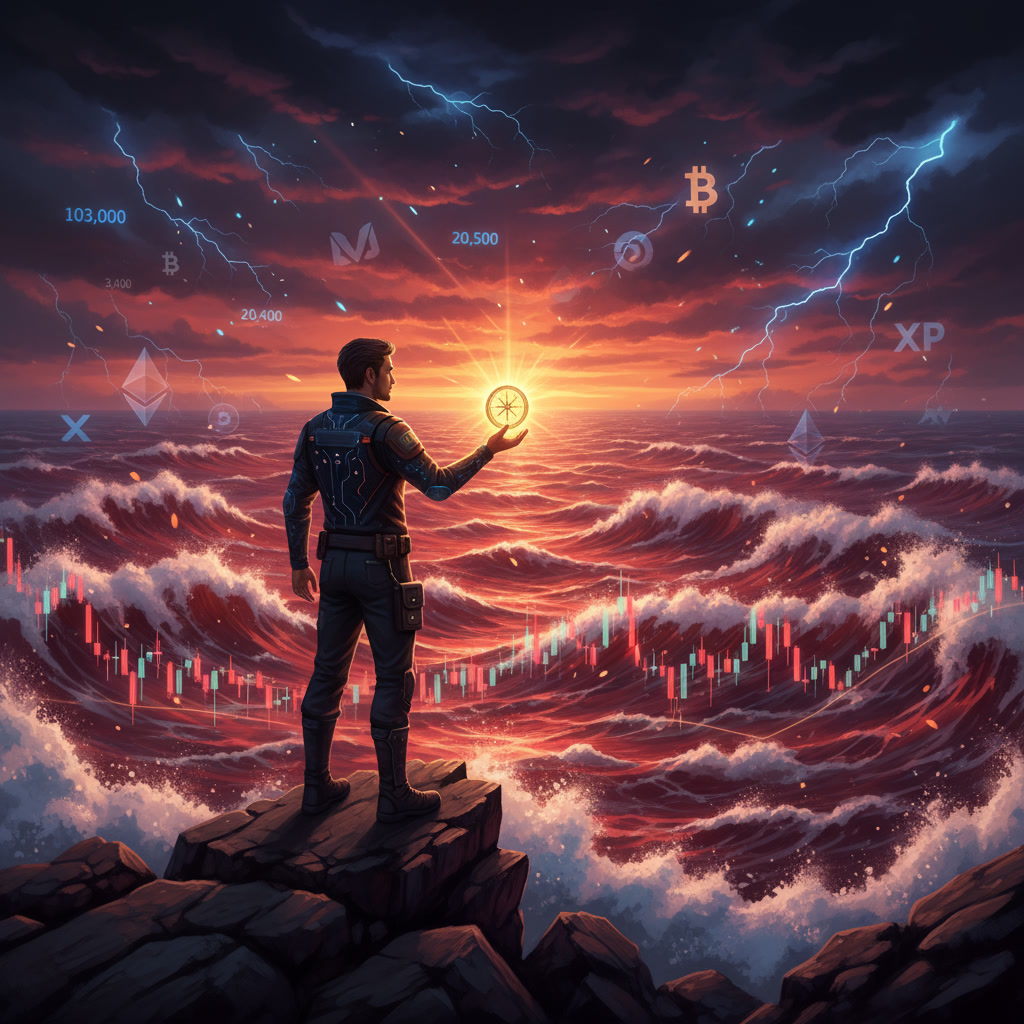The cryptocurrency market offers immense potential, but it’s also a landscape fraught with risk and deception. While the allure of high returns can be intoxicating, ignoring fundamental red flags is a recipe for significant financial loss. Vigilance and skepticism are not just advisable; they are essential survival tools. Let’s delve deeper into three critical warning signs that should immediately trigger caution and further investigation:
-
The Siren Song of “Guaranteed Returns” or “Risk-Free Profits”:
-
The Fundamental Flaw: At its core, cryptocurrency markets are driven by volatility, global adoption trends, technological innovation, complex regulatory shifts, and overall market sentiment. These factors are inherently unpredictable. Any project, influencer, or platform promising specific, high, or guaranteed returns is fundamentally misrepresenting the nature of the asset class or deliberately attempting to defraud.
-
Common Manifestations: Be extremely wary of phrases like: “Double your investment in X weeks!”, “Guaranteed 100% APY!”, “Zero risk, high reward program!”, or “Passive income with no downside.” These are hallmarks of classic Ponzi schemes, high-yield investment programs (HYIPs), or exit scams.
-
The Reality Check: Legitimate investment opportunities (even high-risk ones) focus on potential based on fundamentals, not guarantees. They emphasize the risks involved. Truly decentralized protocols offering yields (e.g., through staking or liquidity provision) make it clear these yields are variable, subject to market conditions, protocol risks, and impermanent loss (for liquidity providers), and are never “guaranteed.”
-
Action: Treat any promise of guaranteed returns as an immediate red flag. Conduct rigorous independent research on the entity making the promise. Search for scam reports, regulatory warnings (from bodies like the SEC, FCA, MAS), and critical community discussions. If it sounds too good to be true, it almost certainly is.
-
-
The Opaque Veil: Anonymous or Unverifiable Development Teams:
-
Why Transparency Matters (Usually): In the decentralized ethos of crypto, pseudonymity can exist for valid reasons (privacy, censorship resistance). However, for projects actively seeking investment and promoting a specific product or token, a completely anonymous team presents an unacceptable level of risk. It eliminates accountability and makes exit scams effortless.
-
Key Concerns:
-
Zero Accountability: Who is responsible if things go wrong? Who develops the code? Who manages funds?
-
Impossible Due Diligence: You cannot assess the team’s experience, track record, or credibility.
-
Exit Scam Facilitation: An anonymous team can vanish overnight with investors’ funds, leaving no trace.
-
Lack of Credibility: Serious projects tackling complex problems usually have credible leaders willing to associate their reputation with the venture.
-
-
Legitimate Pseudonymity: Some highly technical projects (like privacy protocols) might have core developers using pseudonyms but with a long, verifiable history of contributions on platforms like GitHub, and strong community trust built over years. This is distinct from a brand-new project with no identifiable humans behind it.
-
Action: Prioritize projects where core team members are publicly known and have verifiable professional backgrounds (LinkedIn, prior projects). Check if their claimed experience aligns with reality. If the team is pseudonymous, demand an exceptionally strong track record of open-source contributions, transparent communication, and community trust established over a significant period. For new projects, anonymity should be considered a major red flag demanding extreme caution or outright avoidance.
-
-
The Liquidity Trap: Low Volume, Low Liquidity, and the Rug Pull Threat:
-
Understanding Liquidity: Liquidity refers to how easily an asset can be bought or sold without significantly impacting its price. High liquidity (large trading volume and deep order books) is crucial for fair price discovery and the ability to enter or exit a position.
-
The Red Flag: Extremely low trading volume and shallow liquidity (easily spotted by large gaps between buy and sell orders on the order book) are severe warning signs, especially for newer or smaller altcoins and tokens.
-
Dangers:
-
Price Manipulation (“Pump and Dump”): Low liquidity makes it easy for individuals or groups to artificially inflate the price (pump) with relatively small buy orders and then dump their holdings on unsuspecting buyers, causing a crash.
-
Rug Pulls: This is a malicious act where developers create a token, generate hype, attract investment (often into a liquidity pool on a Decentralized Exchange – DEX), and then suddenly withdraw all the liquidity from the pool. This makes the token completely worthless overnight, as there are no funds left to facilitate selling. Investors are left holding worthless tokens.
-
Slippage and Failed Trades: Even if not a scam, low liquidity means you might pay much more than expected to buy (slippage) or receive much less than expected when selling. Trades can also fail due to insufficient liquidity.
-
-
Identifying the Risk: Use tools like CoinMarketCap, CoinGecko, or DexScreener to check:
-
Trading Volume: Is it consistently very low (e.g., tens or hundreds of thousands of dollars, not millions)?
-
Liquidity Pool Value (For DEX Tokens): Check the value locked in the token’s primary liquidity pool (e.g., on Uniswap, PancakeSwap). Is it extremely low (e.g., under $100,000 or even $10,000)? Who holds the Liquidity Pool (LP) tokens? (Rug pulls often involve the developers holding a massive portion or controlling the LP).
-
Concentration of Holdings: Does a tiny number of wallets hold a massive percentage of the total token supply? This is a hallmark of potential manipulation or an impending rug pull.
-
-
Action: Avoid investing significant sums in tokens with very low volume and liquidity. Be exceptionally cautious with new tokens on DEXs. Always check liquidity pool details and holder distribution. Understand that exiting a position in a low-liquidity token can be difficult or impossible without crashing the price yourself. Treat these conditions as a major red flag demanding avoidance or extreme risk limitation.
-
Conclusion: Empowerment Through Vigilance
The crypto space thrives on innovation but also attracts bad actors. Recognizing these critical red flags – the impossible promise of guaranteed returns, the dangerous anonymity of unaccountable teams, and the perilously thin ice of low liquidity – is fundamental to protecting your capital. Never let FOMO (Fear Of Missing Out) override these basic principles of due diligence.
Investing wisely requires going beyond the hype. Scrutinize claims, demand transparency (or verifiable credibility for pseudonymous actors), understand the mechanics of liquidity, and prioritize projects with substance over empty promises. Your most valuable assets in this market are skepticism, research skills, and the discipline to walk away when the warning signs are clear. Stay informed, stay cautious, and protect your investments.


 Want to stay updated with the latest insights and discussions on cryptocurrency?
Want to stay updated with the latest insights and discussions on cryptocurrency? For collaborations and inquiries:
For collaborations and inquiries: 

